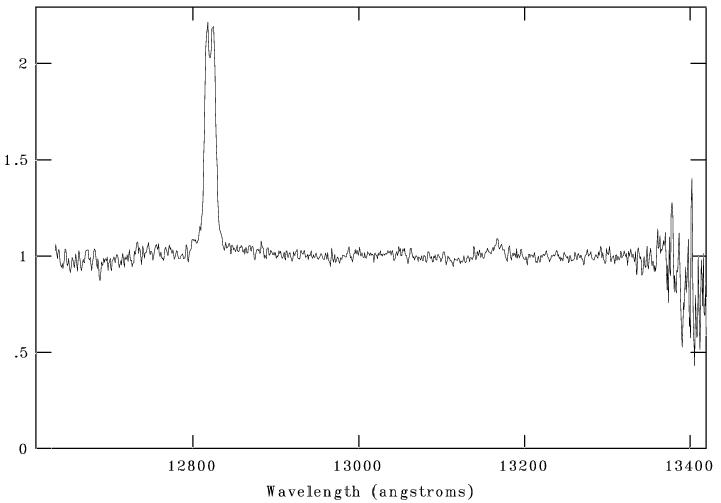For each grism the spectral resolution is upped by a factor 3 when using the HRC, and consequently the sampled wavelength range in each order is a factor 3 shorter. As we currently have only 1 grism, the medium-resolution mode currently offers rather limited wavelength ranges in the JHK bands: 1.26-1.34 micron (Pa-beta), 1.57-1.67 micron, 2.07-2.20 micron (Br-gamma). Respective dispersions are 0.87, 1.08, 1.39 A/pix. With the dedicated 0.5 arcsec slit (approx 2.5 - 3 pixels wide), the JHK resolutions are R=5700, 5700, 4900 respectively.
For the first-light observations of HRC medium-resolution spectroscopy we chose the same object as for the WFC low-res first-light observations , in order to allow direct comparison of the results. On the evening of May 18, 2005, we observed the bright Be star 66 Ophiuchi (B2Ve, V=4.6). Be stars are rapidly rotating main-sequence B stars with strong recombination emission lines arising from a quasi-keplerian circumstellar disk. The origin of the disk is under great debate, but it is clear from abundant observations that the star feeds the disk, i.e. these disks are the opposite of accretion disks. Proposed mechanisms to feed the disk are non-radial pulsations, magnetic fields and stellar wind, all in combination with rapid stellar rotation.
We used baffle-lamp flats for flatfielding/fringe-correction. We used the new Ar and Xe lamps, also located in the telescope baffle, for wavelength calibration. The star was observed in an AB nodding pattern for J, and Ks with 200 second exposure time at each telescope position. For correction of telluric lines and fringes we used the F4V star HIP86835 (V=6.6, one exposure of 200s for each band). The spectra were optimally extracted.


Last updated Sep 2005